Comparison Chart: Best DAW
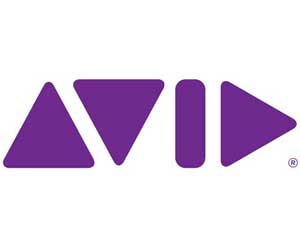
Check Price:
Pros
- Industry standard with extensive features for recording, editing, mixing, and mastering.
- Supports a vast number of audio and MIDI tracks.
- Comes bundled with a powerful suite of plugins and third-party plugin support.
- Ideal for complex sessions and professional music production, as well as film and sound design.
Cons
- Price
- Steep learning curve for new users.
- Limited compatibility with non-Avid interfaces.
- Only supported AAX plugins.
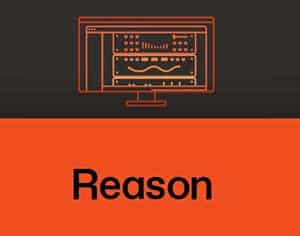
Check Price:
Pros
- User-friendly interface suitable for beginners
- Massive sound library
- The Reason Rack can be used in other DAWs.
- Supports VST, VST3, AU, AAX plugins.
Cons
- Not the best choice for certain genres, especially those relying on acoustic and live instruments.
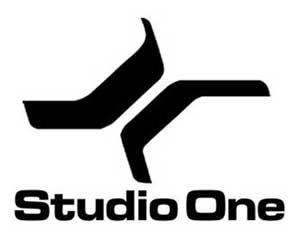
Check Price:
Pros
- Intuitive features for live performance.
- Robust proprietary plugins and extensive sample library.
- Supports immersive audio and Dolby Atmos.
- Drag and drop workflow
Cons
- Potential latency or lag on underpowered computers during live performance.
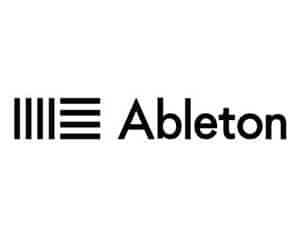
Check Price:
Pros
- Unique Session View ideal for techno and EDM genres.
- Includes Max for Live for custom sound creation.
- Large sound library and advanced MIDI sequencing capabilities.
- Supports VST2, VST3, AU v2, AU v3 plugins.
Cons
- Less focus on live instruments compared to other DAWs.
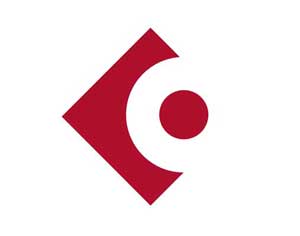
Check Price:
Pros
- Tailored features for guitarists, including its superior Amp Rack plugin.
- Combines track and mixer interfaces for ease of use.
- Powerful editing tools like Spectral Warp for granular control.
- Supports VST2, VST3 plugins.
Cons
- Learning curve when migrating from another DAW.
- Not as suited for non-guitar focused production out of the box.
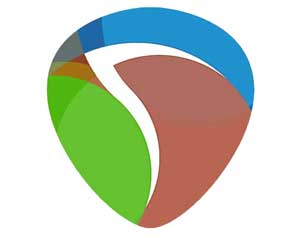
Check Price:
Pros
- Flexible and powerful, with a light system footprint.
- Supports a vast array of plugins and audio formats.
- Good Price
- Customizable through scripts and modifications.
Cons
- No bundled virtual instrument or sample pack.
- Interface and workflow not ideal for beginners.
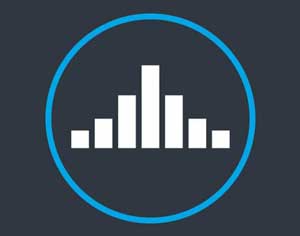
Free Version:
Pros
- Free version available, with cross-platform compatibility.
- Detachable GUI elements and simple built-in FX.
- Low system requirements
- Suitable for beginners.
Cons
- Free version limited to 10 tracks
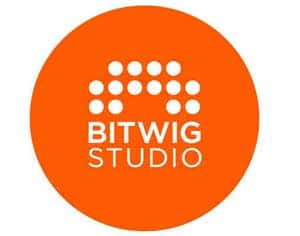
Check Price:
Pros
- Very Flexible workflow
- Comprehensive editing tools and instrument/effect bundle.
- Works with Linux
- Supports VST2, VST3 plugins.
Cons
- For users who like predefined structure, this is not your DAW
What is a DAW?
A Digital Audio Workstation (DAW) is software created for the purpose of recording, editing, and producing digital audio files.
How We Chose the Best DAWs
We consider the following to be the most important factors when choosing a DAW:
- Your personal workflow and genre
- Ease-of-Use/ Learning Curve
- System and Hardware Compatibility
- Cost
Not all DAWs are created equal. Each software has its particular origin story and evolution. As a result, each DAW is uniquely tailored differently to particular genres, users, and phases of production.
For example, some DAWs are be better suited for beginners, some are great for live instruments and not so great for EDM, and some are better for mixing than composition.
In this in-depth analysis of the current DAWs on the market, we tested and tried extensively to give you our take on which DAW performs best, based on your particular needs.
See here for our all of our reviews of audio equipment and software.
Quick Summary:
In this article you will find:
- An in-depth look at the digital audio workstation (DAW) landscape in 2024
- We have organised the current market based on what each DAW is best for including the following categories:
- Best DAW Overall
- Best DAW for Beginners
- Best DAW for Techno
- Best DAW for Mixing
- Best DAW for Live Performance
- Best DAW for Guitarists
- Best Free DAW
Best DAW Overall: Avid Pro Tools
Check Price:
Bottom Line:
The industry standard with something for everyone. Ideal for those who require brawn for large, complex sessions.
Why This is the “Best” DAW
The “best” DAW (Digital Audio Workstation) for one person is unlikely to be the best DAW for everyone. That said, Pro Tools as the industry standard for decades, makes a strong case if we have to choose a “best”. One of its unique selling points is that it excels in all phases – recording, editing, mixing, and mastering.
Pro Tools is built to handle large, complex sessions. (Note: the machine it’s running on should meet the hardware requirements) On top of that, it’s not just a powerhouse for music production. With Dolby Atmos, Surround Sound, and Ambisonics compatibility, Pro Tools has the brawn for serious film and sound design, scoring, and video editing.
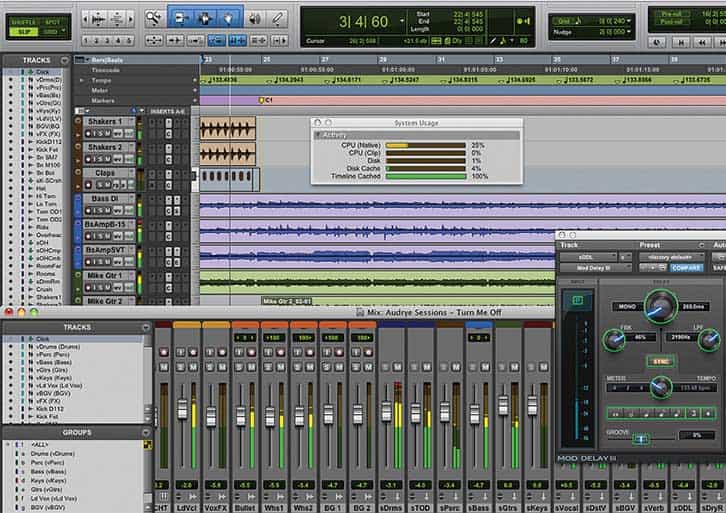
As one of the trailblazing applications in digital audio, it’s no coincidence that it’s still considered by professionals across the globe as the only DAW. The cost can be prohibitive for some, but if you want the DAW that isn’t justifiable for many, but if you’re advanced in audio and want to make an investment in a DAW that most of the professional industry swears by, Pro Tools is it.
What You Get
Pro Tools has a staggering amount of features and capabilities Pro Tools packed in.
With support for 2,048 audio and 1,024 MIDI tracks, the only limits to what it can do are based on hardware and the user’s creativity. Avid has made great strides in streamlining it. Considering its capabilities in all phases of production, this is no small feat.
We really like the new Pro Tools Sketch which allows you to quickly compose ideas. It even includes an iPad app for mobile creative work. We love this feature for anyone daunted by the sheer size of the DAW.
Every DAW comes bundled with software, but Pro Tools takes it to another level. With officially licensed third-party plugins and Avid’s powerful processing suite, you don’t even have to reach for plugins that don’t come with it.
Like most applications, Pro Tools switched to a subscription model with different pricing tiers that offer more robust features at higher price points. Some only come in annual subscriptions, but you can save some budget overall by renewing it only once per year.
OS & Hardware Requirements
PC
- OS: Windows 10 or later
- CPU: Intel Core i7 or higher
- RAM: 16GB (32GB recommended)
- Disk space: 15GB
Mac
- OS: macOS 12.7 to 13.6
- CPU: Intel Dual Core i5 / M1 processor or higher with Apple Silicon support
- RAM: 16GB (32GB recommended)
- Disk space: 15GB
Third Party Plugin Support:
None. Proprietary AAX Native only.
Honorable Mentions for the Best Daw Overall
One cannot dispute the utility of an application designed to perform across so many media industries, but Pro Tools is not for everyone. The biggest downside to Pro Tools is its lack of full-feature compatibility with non-Avid audio interfaces.
Creators of electronic music often prefer the design and workflow of Ableton Live and Reason over those of Pro Tools
Those who integrate a DAW into their live set will find Pro Tools a bit too large and cumbersome. It can be prone to glitches and dropouts at the most inconvenient times. In this case, PreSonus Studio One or Soundbridge are much better alternatives.
Best DAW For Beginners: Reason
Check Price:
Bottom Line:
A powerful DAW with a user-friendly interface ideal for beginners.
Why This is the Best DAW for Beginners
Beginners can dive right in! Let’s start with the sound library. Describing it as massive doesn’t do it justice. Across multiple gigabytes of samples, you get everything you need to start creating. This includes instruments, synths, drum kits, loops, samples, and effects. (More than 29,000, actually)
Next, there’s the improved browser for quick creation. Sifting through a library that large could be daunting, but the upgraded browser search makes it easy by using categorization, indicators, and folders so users can easily find what they’re looking for.
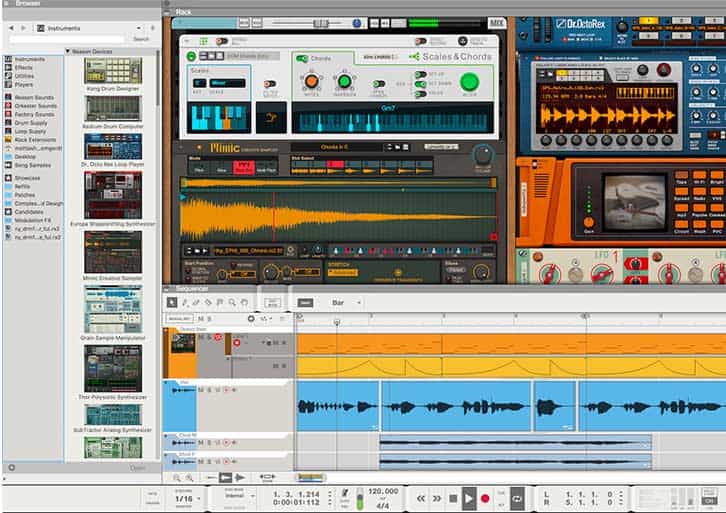
Thirdly, Reason’s Virtual Studio Rack is incredibly powerful (and it can be used in other DAWs!). The GUI and overall interface are streamlined to help users create quickly. It’s easy to learn the basics and yet, the DAW itself is far from basic.
Although there are many reasons to love Reason, it’s not the best choice for certain genres. For example, if you’re looking to mostly record acoustic and live instruments, the features might be irrelevant. But if you’re looking for the best DAW for beginners, look no further.
What You Get
Reason comes with several samplers including our favorite, the Mimic Creative Sampler. It uses industry-leading DSP to slice, dice, stretch, and shift samples in unique ways. Add to that Reason’s beloved Combinator, which allows users to create loads of instrument combinations and effects.
Also included are the plugin and standalone versions of the innovative Reason Rack. This means you can create racks in Reason and nest them within another DAW to use them as effects! Simply leverage the powerful processing within Reason and integrate it with the workflow of another workstation.
Third-party sample packs or plugins are supported, but Reason Studios has made sure that everything you need is right here.
OS & Hardware Requirements
PC
- OS: Windows 11, Windows 10 1607 (build 14393) or later, 64-bit
- CPU: Intel / AMD multi-core
- RAM: 4GB minimum
- Disk space: 5.5GB for application, 8GB for optional content, 12GB for Reason+ Rack Extensions, might use up to 20GB scratch disk space for cached graphic assets
Mac
- OS: macOS 10.13 High Sierra or later, 64-bit
- CPU: Intel / M1 multi-core
- RAM: 4GB minimum
- Disk space: 5.5GB for application, 8GB for optional content, 12GB for Reason+ Rack Extensions, might use up to 20GB scratch disk space for cached graphic assets
Third-party Plugin Support
VST, VST3, AU, AAX
Honorable Mentions for the Best DAW for Beginners
With its easy learning curve, PreSonus Studio One is also a great option for beginners. We also like Reaper for beginners as it provides multiple ways to do everything.
Best DAW for Live Performance: Presonus Studio One
Bottom Line:
A DAW that has evolved to compete with the big boys. Its unique Show Page and workflow is ideal for live performance.
Why This is the Best DAW for Live Performance
With a drag-and-drop workflow structured for the unpredictable nature of live performance, Studio One is our top choice for this category.
Live performance is unpredictable. When you are worried about prepping your session, coordinating cues with a sound team at a venue, you need a DAW with a simple workflow that allows you to focus on the performance.
We love the Show Page in Studio One for exactly this reason. It’s simple and powerful. In the video below, you can get a good idea of what the Show Page looks like:
And, Studio One is not limited to live music. With the immersive audio features, the DAW works for anything on the stage: performance art, film screenings, plays – you name it.
What You Get
Version 6.6 now includes a powerful score editor, Smart Templates, advanced integration with Celemony Melodyne for live autotune, a Lyrics Track function (no teleprompter needed), Dolby Atmos support, Apple Spatial Audio support and more.
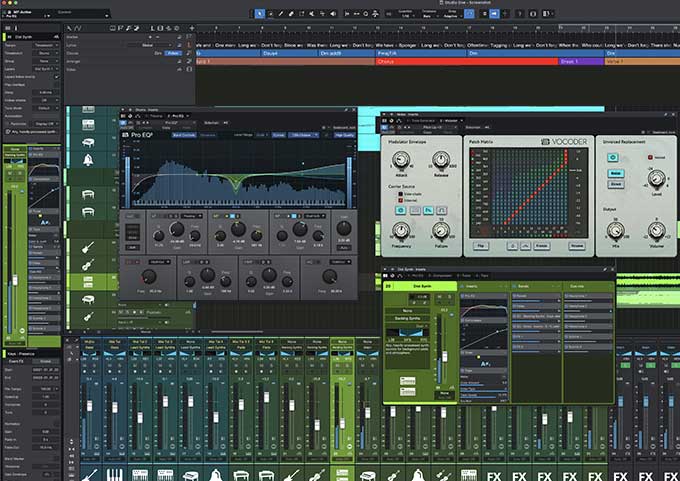
Smart templates give you a head start for however you want to set up your sessions. They’re useful whether you have time to assemble them or have to make last-minute changes in the green room.
Studio One is particularly effective for live performance of electronic music genres. The Patterns feature offers effortless ways to sequence songs, and Harmonic Editing lets you fine-tune audio and MIDI files.
It has a suite of proprietary plugins that set it apart, and the bundle comes with hundreds of samples and loops that you can combine to create novel sounds. We particularly like the creative power of these three included plugins: Sample One XT, Impact XT, and Presence XT.
First, Sample One XT lets you build out your own virtual instruments. Second, Impact XT is an MPC-like plugin with a workflow that lets you create beats quickly and efficiently. Finally, Presence XT is loaded with expertly crafted virtual instruments. The Presence XT library can be expanded with a PreSonus Sphere membership.
This trio of plugins all support MPE MIDI controllers that give you a level of fast response and expression that rivals using analog instruments. Studio One’s workflow supports Immersive audio and Dolby Atmos, and every plugin in the suite is updated to support it.
With its steady improvements over the years, Studio One has evolved to become a DAW with the power of Pro Tools, the flexibility of Reaper, and a quick workflow that makes it a no-brainer if you need to integrate a DAW for live performance.
OS & Hardware Requirements
PC
- OS: Windows 10 20H1, Windows 11 (64-bit)
- CPU: Intel Core i3 / AMD A10 or better
- RAM: 4GB, 8GB recommended
- Disk space: 40GB
Mac
- OS: macOS 10.14 or higher (64-bit_
- CPU: Intel Core i3 or better (Native support for Apple Silicon)
- RAM: 4GB, 8GB recommended
- Disk space: 40GB
Third-party Plugin Support
VST2, VST3, AU
Honorable Mentions for the Best DAW for Live Performance
Our choice for the best DAW for Techno, Ableton Live, has features that rival Studio One. Reaper is a low-footprint DAW that doesn’t offer insane features – it just works. Which is exactly what a DAW for a live performance should do.
Best DAW for Techno: Ableton Live
Bottom Line:
An intuitive, powerful DAW. Its unique Session View is the preferred creation tool for Techno and EDM composers.
Why This is the Best for Techno
Techno and its umbrella genre, EDM, have very specific production requirements. You will need a DAW that’s built with specific features to facilitate the quick, easy creation of tracks.
Techno DAW sessions have a lot going on. For this reason, Ableton Live has a GUI/interface that’s user-friendly and helps keep everything neatly organized.
With Ableton Live, it all starts with the different views.
Functioning like two different versions of the DAW, Arrangement View has the kind of workflow you’d expect, but Session View is what sets it apart for creating techno. By using “scenes” – short clips of audio or MIDI – you can create grooves in different arrangements quickly.
Unique features like special effects and warping help shape sounds specific to the genre. And, full MIDI keyboard support lets you input musical information in real-time.
Speaking of MIDI sequencing, few if any DAWs do it better than Ableton Live. Its generators let you create patterns quickly while its Transformations let you add variations like acceleration and deceleration curves or chord and strumming patterns. These features help you create efficiently, and are especially helpful for inspiration.
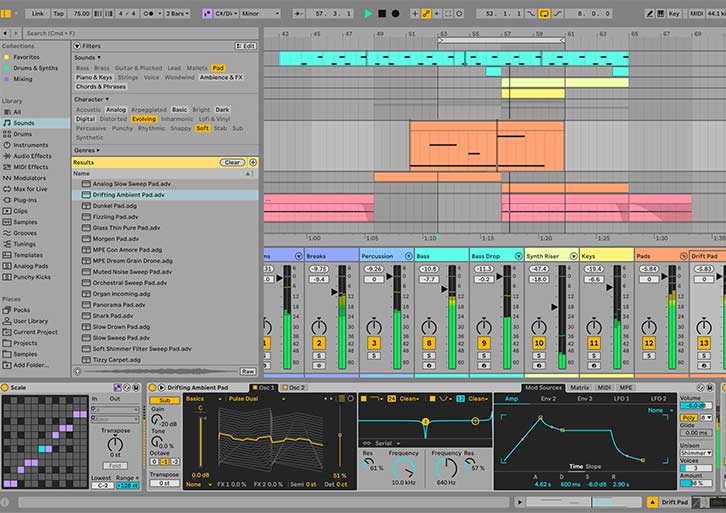
Techno might be a hard electronic genre, but that doesn’t mean that audio fidelity is insignificant. Ableton Live records up to 32-bit/192kHz so you can get the highest sound quality to please even the snobbiest rave and headphone freaks.
Many techno artists integrate DAWs into their live performances, and Ableton’s ‘multiple live performance’ feature lets you arrange sessions for live shows cleanly and easily. I mean, it’s literally in the name!
Whether you’re a seasoned techno producer or just getting into what it takes to create great tracks in the genre, Ableton Live is a fantastic choice.
What You Get
Ableton Live 12 comes with a massive 71GB of sounds that include software instruments, audio and MIDI effects, synths, and samples.
If you want to create your own sounds, this is easily done with Max for Live! The software allows users without any programming knowledge to string together different sections or blaze new sounds entirely. That said, it does take some knowledge of how effects and instruments work to get usable results.
Ableton Live does take some time to be able to fully use all that it offers. But once you dive in, you’ll see how intuitive it really is.
OS & Hardware Requirements
PC
- OS: Windows 10 version 22H2, Windows 11 version 22H2 or higher
- CPU: Intel Core i5 / AMD quad-core or higher
- RAM: 8GB, more recommended
- Disk space: 3GB for basic installation, 8GB recommended, optional 76GB for additional content
Mac
- OS: macOS 11 or later
- CPU: Intel Core i5 / AMD quad-core or higher
- RAM: 8GB, more recommended
- Disk space: 3GB for basic installation, 8GB recommended, optional 76GB for additional content
Third-party Plugin Support
VST2, VST3, AU v2, AU v3
Honorable Mentions for the Best for Techno
For EDM, Reason is a solid runner-up with its wealth of features and sound packs. Image Line FL Studio is a solid runner-up for EDM with excellent cross platform compatibility. We also like Cockos Reaper for these genres if you just require the DAW and already have a third-party sound library.
Best DAW for Guitarists: Steinberg Cubase Pro
Check Price:
Bottom Line:
An elegant DAW that comes with some of the best rig emulations and editing features for Guitarists.
Why This is the Best DAW for Guitarists
The guitar is one of the easier instruments to capture, so as long as a DAW has a record button you can make it work. But some offer features geared specifically for tracking guitar and bass and Steinberg’s Cubase Pro 13 does this best.
As the inventor of the VST plugin standard, Steinberg knows a little something about processing that others don’t. And Cubase comes with a great suite that any guitarist will find useful.
Features and functions aside, the Amp Rack plugin is the most appealing aspect of using Cubase for guitarists. It comes with models of some of the most popular analog amps of all time like Vox, Marshall, Mesa Boogie, Soldano, and more. With nearly endless tonal possibilities and emulations that rival expensive analogue gear, you might just prefer the DI track from Cubase over your studio-recorded setup.
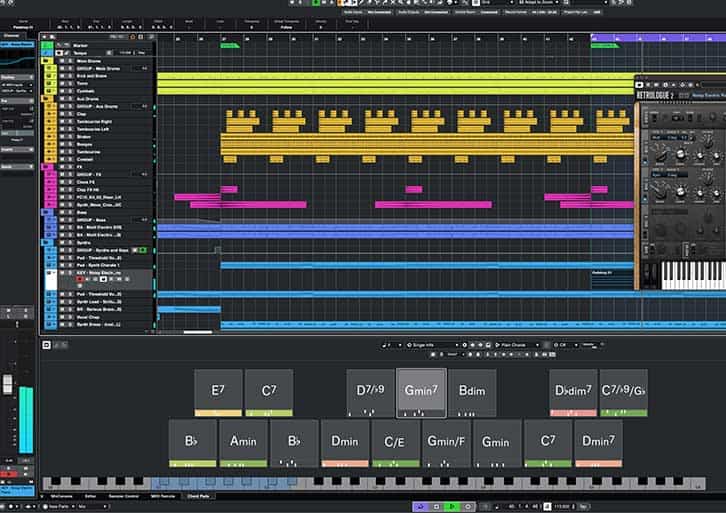
It’s not just the amp sims either. There are multiple Steinberg plugins great for guitarists like the Black Valve tube compressor, strobe tuner, and dynamics processors.
Guitars can be notoriously difficult to edit, especially if there is a lot of gain on them. Spectral Warp offers granular control over the ADSR envelope so you can make the most efficient cuts, crossfades, and comps to create the best performance for the piece.
What You Get
Some DAWs have separate windows for the track and mixer interfaces, but Cubase elegantly combines them so you can see all levels, plugin instances, and routing in one single “pane of glass”. You can break them up if you want, but this makes working on a single screen much easier, a boon for guitarists working on planes or out of hotel rooms.
Additionally, Cubase has revamped features for the Key and Drum editors. Assembling full band mixes you’ll find intuitive controls with both audio tracks and MIDI.
For composition, features like Chord Pads offer an easy starting point for assembling songs or striking inspiration. The chord recognition feature identifies chords and displays them in the Score Editor. This makes it a breeze to quickly pick out complementary chords for progressions – no more fumbling around the fretboard.
There’s not much to complain about with Cubase. It’s built to work without any headaches. Guitarists just want to throw down their parts, and Cubase makes that as easy as it gets.
OS & Hardware Requirements
PC
- OS: Windows 10 or later
- CPU: Intel Core i5 / AMD Ryzen or higher
- RAM: 8GB (more recommended)
- Disk space: 70GB
Mac
- OS: macOS 12 or later
- CPU: Intel Core i5 or higher
- RAM: 8GB (more recommended)
- Disk space: 70GB
Third-Party Plugin Support
VST2, VST3
Honorable Mentions for the Best DAW for Guitarists
When it comes to DAWs that bundle amp sims, Ableton and Pro Tools are great alternatives for guitarists.
Best DAW for Mixing: Cockos Reaper
Check Price:
Bottom Line:
A dark horse among DAWs with flexibility and a light footprint on your machine.
Why This is the Best DAW for Mixing
Reaper has flown under the radar in the digital audio workstation conversation for years. For those in the know, it’s one of the most flexible options on the market. On top of that, it leaves a very light footprint on the host machine.
The best thing about Reaper is its flexibility and intuitive routing for mixing. In Pro Tools, Logic Pro X, and other popular DAWs, if you want to bus tracks, you have to insert a dedicated auxiliary track and manually set up the routing. This is tedious and outdated.
Reaper offers a quicker solution for mixing. Just create a new track, put the tracks you want to bus under it, and folder them in. The routing is set up automatically! This might seem insignificant at first, but in the context of a large mixing session, it saves so much time.
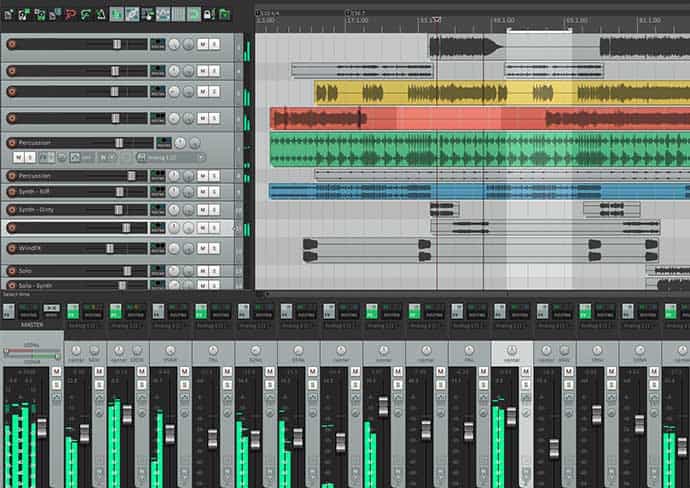
Another distinct advantage of Reaper over other applications is its efficient use of system resources. This is a boon for mixing sessions. As more plugins are added, more system resources start spinning up. Before you know it, your project is unworkable, especially on underpowered machines.
Reaper’s light footprint simply means you have more RAM and processing power available for your mix.
What You Get
You’re up and running very quickly with this DAW, so it might seem at first like there’s not much on offer. But there is a lot under the hood. You can use Reaper for years and still not even scratch the surface of its potential.
The low price tag combined with ease of use means there really aren’t any barriers to entry. The developers are constantly improving it. It even offers a free trial.
There might not be another DAW that supports as many plugins or audio formats as Reaper. On top of that, Reaper is universally compatible with external hardware such as audio interfaces or MIDI devices.
The DAW does lack a decent sound library. There is no included virtual instrument or sample pack bundle. But it certainly won’t bog down your system or overfill your hard drive.
For the code nerds out there, this DAW offers all kinds of ways to integrate custom extensions, scripts, and modifications. Reaper’s tagline is “audio production without limits” and it certainly lives up to it.
OS & Hardware Requirements
PC
- OS: Windows XP to 11 (32-bit or 64-bit)
- CPU: Intel Core i7 (minimum)
- RAM: 4GB
- Disk space: 1GB
Mac
- OS: macOS 10.5 to 14.x
- CPU: 8-core or higher
- RAM: 4GB
- Disk space: 1GB
Linux
- Requires GTK+3
GTK+2 supported with additional effort - Supports x86_64, i686, armv7l, aarch64
Third-party Plugin Support
VST2, VST3, AU, DX, JSFX, LV2, CLAP
Honorable Mentions for the Best DAW for Mixing
Mixing is one of the things Pro Tools does best, but its inflexible nature when it comes to non-Avid audio interfaces place it out of reach for some users. PreSonus Studio One, another excellent option for mixing, offers a similar workflow to Reaper that will appeal to beginners and advanced users alike.
Best free Daw: Soundbridge
Check Price:
Bottom Line:
Our favorite Free DAW that works on both PC and Mac.
Why This is the Best Free DAW
Free DAWs used to have a reputation for being inferior. Soundbridge is proof that those days are in the past.
We like the free version of Soundbridge. It’s perfect for beginners. It stands up well to other DAWs on the market, especially for beginners who are just testing the digital audio waters. If you need more, the paid version is only $9.99 per month so it’s not exactly breaking the bank.
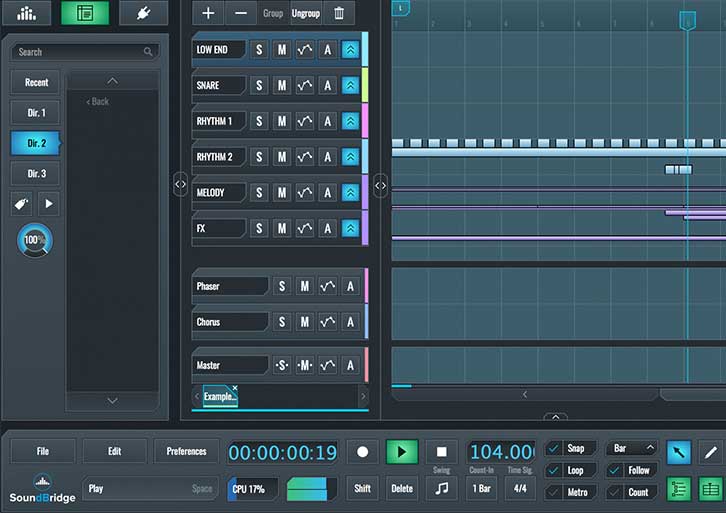
The cross-platform design works with PC and Mac systems. It runs on fairly modest systems too, which is great for beginners who are new to exploring digital audio.
Users also have free access to a wealth of knowledge, how-to, and educational resources from respected names in the music industry that teach you the ins and outs of producing music in all genres.
If your project goes beyond the basics, you will probably need to upgrade to the $9.99/month paid version. The biggest downsides to the free version are the 10-track limit and the lack of access to the sound bank.
What You Get
Rather than static windows, the GUI in Soundbridge features detachable elements so you create exactly what you need to see.
The built-in FX are simple and to the point, but that doesn’t mean they don’t get the job done. Simple skins and to-the-point controls make dialing them in without distraction. One of the coolest is RitMix, a two-in-one drum machine that combines the 16-pad layout of an MPC with a 16-step sequencer.
Soundbridge works well across all phases of production too. It only supports VST plugins, but that’s not exactly a turnoff.
It might be freeware, but that’s not the dirty word that it used to be. There is an intense level of craftsmanship that went into creating Soundbridge. But to be clear, the free version only comes with 10 tracks.
OS & Hardware Requirements
PC
- OS: Windows 8, 10, or 11
- CPU: Intel Core i5 / AMD multi-core
- RAM: 8GB
- Disk space 2GB:
Mac
- OS: macOS High Sierra 10.13 to Monterey 12
- CPU: Intel Core i5 / Apple M1
- RAM: 8GB
- Disk space: 2GB
Third-party Plugin Support
VST
Honorable Mentions for the Best Free DAW
There are quite a few free DAWs on the market that are worth trying, with Studio One Prime, Audacity, Waveform, and GarageBand ranking as some of the best.
Best DAW for Linux: Bitwig Studio
Check Price:
Bottom Line:
A DAW for Linux users that outclasses other DAWs in terms of flexibility. Its modular interface can shape shift to fit your needs.
Why This is the Best DAW for Linux
If you’re one of the computer Illuminati that uses Linux, there aren’t many options when it comes to digital audio workstations. But you can run Bitwig Studio – and what a music production powerhouse it is!
Flexible is the word to describe this DAW. The different workflows meet users wherever they are and however they prefer to work. With its modular design structure, the DAW can shape-shift for music production, film, TV, sound design, and even video games.
That said, it might be too flexible for some. If you’re the kind of person that needs structure, this won’t be the best DAW for you.
Operating system compatibility issues aside, Bitwig Studio is all about offering features and benefits that appeal to modern music production. While some DAWs haven’t changed with the times, Bitwig Studio was created because of the times.
What You Get
Some DAWs make you conform to strict workflows, and some give you latitude to use the tool in whatever way works best for you. Bitwig Studio is the latter.
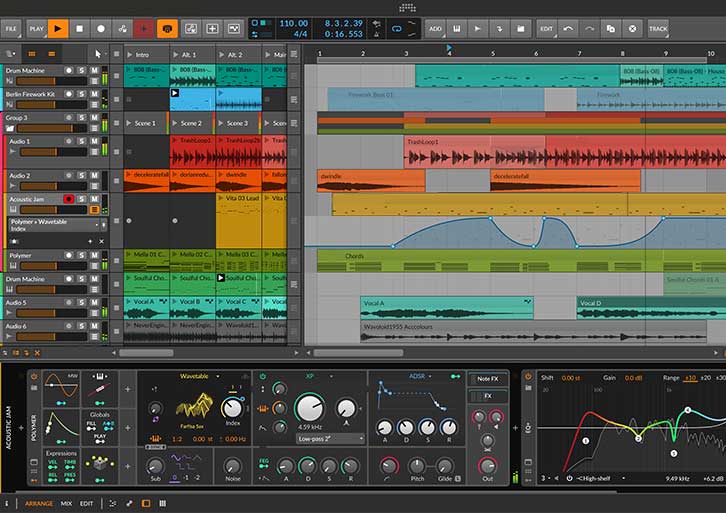
As for workflows, it offers linear and non-linear options tailored for music recording, sound design, and even live performance. Included is a package of over 90 instruments, effects, and other assets that make it easy to get going right away.
Bitwig Studio offers a serious suite when it comes to editing tools. Audio clips can be split, pitched, scaled, and stretched easily, and MIDI can be input through the typical piano roll method or through MPE or CV signals.
Comping is easier than ever with the Arranger and Launcher functions. Its instrument and effects bundle packs a serious punch with over 90 assets that include effects, container devices, and signal routers.
Bitwig Studio is built on flexibility, just like the Linux operating system. It’s not just for Linux either, as Windows and Mac users will no doubt get a little curious once they start researching this dark horse DAW.
OS & Hardware Requirements
Linux
- OS: Ubuntu 20.04 or later, or any modern distribution with Flatpak installed
- CPU: 64-bit dual-core or better x86 CPU with SSE4.1 support
- RAM: 4GB RAM minimum
- Disk space: 12GB minimum
PC
- OS: Windows 7 SP1 or later
- CPU: Intel Core i5 / AMD quad-core or higher
- RAM: 4GB RAM minimum
- Disk space: 12GB minimum
Mac
- OS: macOS 10.14 or later
- CPU: Intel Core 2 Duo / Apple Silicon or higher
- RAM: 4GB RAM minimum
- Disk space: 12GB minimum
Third-party Plugin Support
VST2, VST3
Honorable Mentions for the Best DAW for Linux
Luckily for Linux users, Cockos Reaper, the only other decent DAW that works with Linux, is a very good second option. Read on…
Questions or Comments?
Follow the discussion here on Facebook.